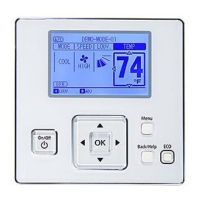IFC-3030 Programming Manual — P/N 52025:C 08/05/2005 115
Appendix D: AWACS™ Applications
D.1 AWACS Overview
AWACS™ (Advanced Warning Addressable Combustion Sensing) is a set of software algorithms
that provide the IFC-3030 with industry-leading smoke detection capability. The user can program
AWACS functions on a global or on a per-detector basis.
AWACS topics covered in this appendix:
D.2 AWACS Features
AWACS features include the following:
• Drift Compensation and Smoothing
• Maintenance Warnings - Three Levels
• Self-optimizing Pre-Alarm
• Detector Sensitivity
• Cooperative Multi-Detector Sensing
D.2.1 Drift Compensation and Smoothing
Drift compensation uses algorithms (U.S. patent pending) that identify and compensate for long-
term changes in the analog readings from each smoke detector. (Typically, dirt and dust
accumulation inside the smoke chamber causes long-term changes in detector readings.) Drift
compensation does the following:
• Allows a detector to retain its original ability to detect actual smoke, and resist false alarms,
even as dirt and dust accumulates.
• Reduces maintenance requirements by allowing the control panel to automatically perform
the periodic sensitivity measurements required by NFPA Standard 72.
The software also provides smoothing filters to remove transient noise signals, usually caused by
electrical interference. Different smoothing algorithms are used, depending on the sensitivity
selection of each detector. Refer to “Detector Sensitivity Settings” on page 119 for more
information on detector sensitivity levels.
Topic Page
AWACS features – Descriptions of AWACS features, such as Drift
Compensation, Sensitivity Adjust, programmable on a per-detector basis.
115
Pre-Alarm – Alert and Action settings, programming (global settings). 118
Detector Sensitivity Settings – Pre-Alarm and Alarm sensitivity settings
for photo, ion, laser, and multisensor detectors programmable on a per-
detector basis.
119
Detector Maintenance Features – Instructions for viewing and printing
detector maintenance information.
121

